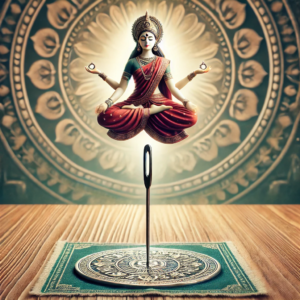Over the last ten days, across India, one of the most important festivals of the year is being celebrated: Navaratri, a festival of nine nights and ten days. Navaratri is the celebration of the divine Feminine Energy or Shakti, the animating principle that pervades the cosmos, and which is symbolised by the Mother Goddess. Shakti is the creative principle that animates the cosmos.
Shakti is known by 1001 names, each name representing an attribute / state of mind, the mastery over which can give us, humans, the capacity to lead happier and richer lives.
The premise underlying Navaratri is similar to festivals in all the religions of the world: that, in order to live good, happy and successful lives, we need to constantly struggle to conquer our own individual weaknesses and internal demons. Among Hindus, this struggle reaches its most intense peak during the festival of Navaratri. While universal love and exhuberance, tranquility and peace figure among the attributes, the most significant for our daily lives are: Courage and Gentleness, Health and Wisdom, Abundance and Contentment, Determination and Compassion. Navaratri is a festival of annual renewal of this commitment to acquiring the attributes of the Goddess. It acknowledges that these qualities help us in our daily struggle for mastery over ourselves, and allow us to be the best version of ourselves.

The symbolisms of Navaratri are celebrated in different ways in the different cultural regions of India. One of the evocative symbolisms – from south India – is that during these nine days and nights, the Goddess balances herself on one leg, poised on the tip of a sewing needle, meditating and praying for the fresh reinforcement of all these attributes/qualities. The tip of the needle is symbolic of the pinpointed focus required for internal mental cleansing. In many parts of India, there is the tradition of fasting or following a spartan diet during these nine days and nights, to help internal bodily cleansing and preparing the body and mind for the major seasonal change of autumn giving way to winter. While the first nine days of the festival are seen as a time to focus and introspect, through a combination of fasting, prayer and meditation, in some parts of the country, as in Bengal, Navratri evenings are for collective celebration of music, dance, theatre and the arts. In Gujarat, Navratri evenings are for young adolescents to congregate for garba and dandiya dancing.
The tenth day following Navaratri is celebrated as Vijayadashami, the day of Victory of Good over Evil. It is the day of new beginnings with renewed determination, guided by the wisdom that has begun to dawn within us. Traditionally, in Tamil Nadu, little children were ceremonially started off at school on this day. In Tamil Nadu and other regions with strong craft traditions, craftspersons reverently re-dedicate themselves to their tools, and musicians and scholars to their respective vocations. In parts of north India, Navaratri is also linked with Lord Rama’s war with Ravana and the latter’s final annihilation on the 10th day, known as Dussehra. Popular folk practice involves the burning of effigies of ‘Ignorance’ and ‘Internal Demons’ – also interpreted as ‘Ravana’ and two of his lieutenants – on the evening of the tenth day. In Jaipur, where Savista is located, from almost a month prior to Navaratri at almost every street corner stand giant brightly painted effigies made of bamboo strips and paper, fierce-eyed and moustache-bristling ‘demons’, urgently asking to be bought!!

While the exhuberance of Navaratri celebrations is most palpable in India’s cities, in rural areas the focus is still one of piety. All around Savista, farmers and their families stay awake through the nights – symbolic of solidarity with the Goddess – singing bhajans (prayers) to the accompaniment of musical instruments. Called jagrans (night vigils), this observance, usually done by rotation, ends with the light of dawn.
As we sign off, we wish all our readers a very happy Vijayadashami and a successful year ahead.



